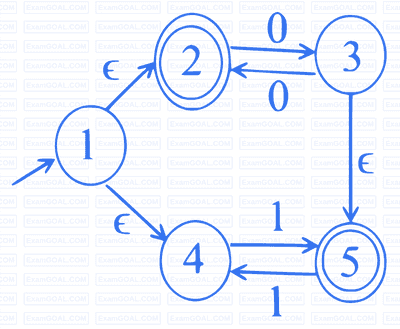Consider an array X that contains n positive integers. A subarray of X is defined to be a sequence of array locations with consecutive indices.
The C code snippet given below has been written to compute the length of the longest subarray of X that contains at most two distinct integers. The code has two missing expressions labelled (P) and (Q).
int first=0, second=0, len1=0, len2=0, maxlen=0;
for (int i=0; i < n; i++) {
if (X[i] == first) {
len2++;
len1++;
} else if (X[i] == second) {
len2++;
len1 = (P);
second = first;
} else {
len2 = (Q);
len1 = 1;
second = first;
}
if (len2 > maxlen) {
maxlen = len2;
}
first = X[i];
}
Which one of the following options gives the CORRECT missing expressions?
(Hint: At the end of the i-th iteration, the value of len1 is the length of the longest subarray ending with X[i] that contains all equal values, and len2 is the length of the longest subarray ending with X[i] that contains at most two distinct values.)
Which one of the following regular expressions is equivalent to the language accepted by the DFA given below?

Let M be the 5-state NFA with ε-transitions shown in the diagram below.

Which one of the following regular expressions represents the language accepted by M?
Consider a context-free grammar $G$ with the following 3 rules.
$S \rightarrow aS, \ S \rightarrow aSbS, S \rightarrow c$
Let $w \in L(G)$.
Let $n_a(w)$, $n_b(w)$, $n_c(w)$ denote the number of times $a$, $b$, $c$ occur in $w$, respectively. Which of the following statements is/are TRUE?